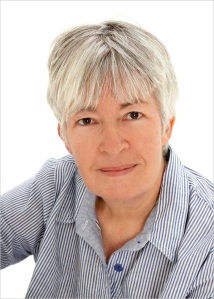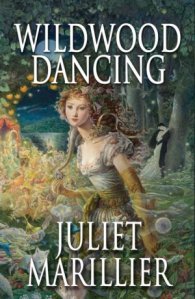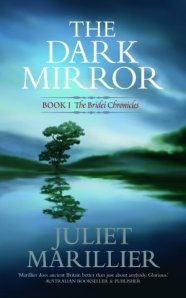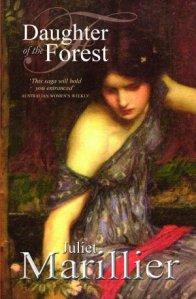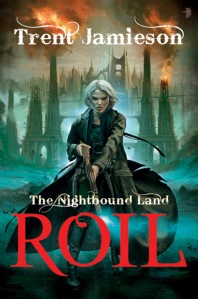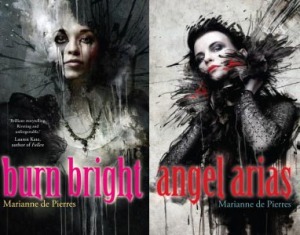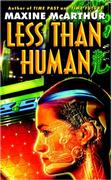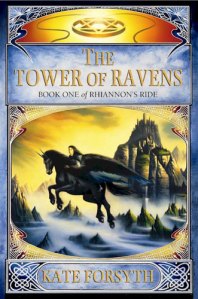As the next of my series featuring fantastic female fantasy authors (see disclaimer) I’ve invited the talented Lara Morgan to drop by.
Q: Your mother is from Bermuda and your father from Croatia and you grew up in Western Australia. I’m assuming that you had access to the cultural heritage of both your parents. Does this help you when you are creating fantasy worlds?
I was definitely brought up with stories about countries overseas but I think what influenced me more was both my parents are avid readers. We always had so many books in the house and I don’t recall ever being told I wasn’t allowed to read anything. I was brought up on a diet of fairy tales, Enid Blyton and CS Lewis and was read Tolkien before I was in double digits so I think naturally veering toward fantasy worlds was unavoidable. Being encouraged to use our imaginations to create our own worlds when we were playing and not being allowed to watch much tv also helped – although I might not have thought that at the time!
Q: On your web site it says you’ve also written under the Lara Martin and Lara Brncic (pronunciation?) names. Did you use these when you were writing as a journalist? And leading on from that why did you choose to write your novels as Lara Morgan?
Martin is my mum’s maiden name which I used once when I was trying to figure out a pen name. Brncic is my maiden name and the name I used when working for the newspaper. I chose to use Morgan because, firstly, having a last name with only one vowel makes it difficult to spell and pronounce, and secondly because my middle name is Marie the M sound worked. I also love having a pen name because it’s like a secret identity to my normal self. Lara Morgan is my writer name separate from the everyday reality of bills and housework.
 Q: You write the Rosie Black Chronicles which is set 500 years in the future and is aimed at Young Adults. Genesis has been released with Equinox coming out soon from Walker Books. Set in a post apocalyptic world where Rosie is on the run with a mystery to solve, the story takes Rosie from Earth to Mars. There’s an environmental thread running through the narrative. Is this something you feel strongly about?
Q: You write the Rosie Black Chronicles which is set 500 years in the future and is aimed at Young Adults. Genesis has been released with Equinox coming out soon from Walker Books. Set in a post apocalyptic world where Rosie is on the run with a mystery to solve, the story takes Rosie from Earth to Mars. There’s an environmental thread running through the narrative. Is this something you feel strongly about?
Yes very strongly and I know I’m not alone. I live in a state that has a huge amount of money and people invested in mining of all kinds and it’s impossible to live here and not think about how long we can keep all this up. It’s so problematic and complicated, because we need the energy, people need the jobs, but I worry that planet wide we are going to be doing too little too late to find other alternatives to feed this consumerist monster of a society we’re growing – and that a future similar to Rosie’s world might be the result, only possibly worse. I think that’s a fear most people relate to.
[youtube=http://www.youtube.com/watch?v=Dyw4oaWyyxo&feature=player_embedded]
Q: You also write adult fantasy books. The Twins of Saranthium series was published by Pan Macmillan. From the cover of The Awakening there looks to be dragons. Were you a Dragon Riders of Pern fan growing up?
 I have never read any of them, which surprises the hell out of most people because, Pern being the classic dragon text, most assume I have. Also the dragon – which I call serpents in my books – on the cover was a decision by the publisher because it made sense at the time. The story line itself really focuses much more on the people, the twins, of the series than the serpents. But they are in there so…
I have never read any of them, which surprises the hell out of most people because, Pern being the classic dragon text, most assume I have. Also the dragon – which I call serpents in my books – on the cover was a decision by the publisher because it made sense at the time. The story line itself really focuses much more on the people, the twins, of the series than the serpents. But they are in there so…
Q: In an interview on the ASIM site you say: ‘I … think good fantasy and science fiction can go just as far in exploring the nature of humanity as any literary novel and I get as much satisfaction from reading someone like LeGuin as from reading Hemmingway, if not more.’ What are the themes you keep coming back to when you write SF and F?
I don’t know if it’s really a theme, but I always find myself writing about identity – how no one is ever who they seem to be – and how power and corruption so often go together. It probably relates to my cynical view of authority and corporations – we as humans can’t seem to get our acts together and behave in a moral way when too much responsibility is allowed to too few, or there is too much money involved.
Q: I was prompted to start this series of interviews because there seems to be a perception in the US and the UK that fantasy is a bit of a boy’s club. Do you think there’s a difference in the way males and females write fantasy?
I hate, hate that boy’s club assumption. It’s so insulting not only to women who write fantasy but also to the vast number of women who read it. And it only encourages the appalling level of ignorance of the amount of women writing fantasy today. (*jumps off soap box*).
I think in early genre writing there tended to be a stronger focus on the technical side, the world building and the wars from male writers as opposed to a greater concentration on the relationships between the characters in those worlds from the (very few) women writers. But now I think those lines are increasingly blurred. Whether it’s because it’s more acceptable now for men to talk about their feelings, and so write more emotionally accessible characters, or for women to go beyond the domestic and explore technology or because we are just learning more from each other, I don’t know but I think it’s of benefit to both. However I do think that women still tend to write more, and in greater detail, about the emotional undercurrents of characters than men, especially in YA fiction.
 Q: Following on from that, does the gender of the writer change your expectations when you pick up their book?
Q: Following on from that, does the gender of the writer change your expectations when you pick up their book?
I rarely pay attention to the sex of the author, but I think it depends what kind of book I’ve picked up. In epic fantasy I think what men are writing and what women are writing are pretty similar. I mean I would expect the same kind of fabulous detail of character and complex world from a Kate Elliot book the same as I would from a George RR Martin. It’s the same when I’m looking at adult dystopian like The Windup Girl or Zoo City. When it comes to YA though I do have different expectations simply because the division is fairly clear. Women are writing a lot of paranormal romance whereas men are writing more action orientated/spy thrillers. But there again, the rule is not absolute. It’s not what I write and Suzanne Collins with her Hunger Games series shows that as well.
Q: And here’s the fun question. If you could book a trip on a time machine, where and when would you go, and why?
I’ve always loved history, and would love to see ancient Greece, but the reality would undoubtedly be a lot less romantic. Plus I’m a woman so they’d probably immediately make me some kind of slave, so I’ll have to choose the future. I’d love to go forward about one thousand years to see, firstly, if humans survive that long without killing ourselves, and if we do, how far our technology goes. Are we going to become a Class 3 civilization? Do we colonise other planets and live like Star Trek and will cake still exist? Fundamental questions of course.
Podcast with Lara Morgan at the Sydney Writers Festival.
Follow Lara on Twitter: @Lara_Morgan
See Lara’s Blog.












